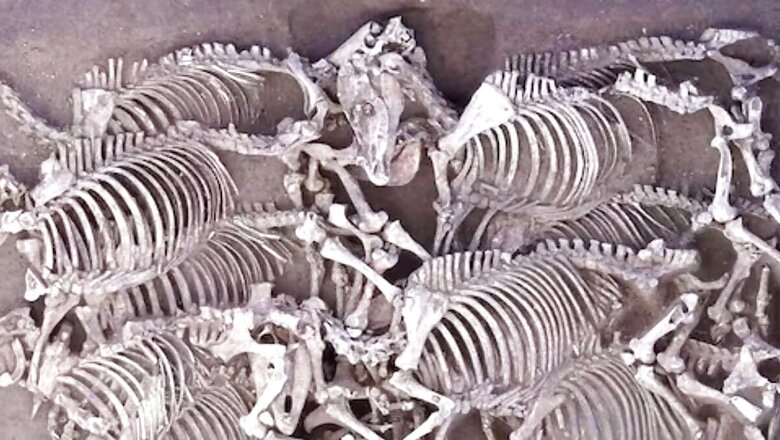
views
French archaeologists have uncovered nine large graves containing the remains of horses from up to 2,000 years ago, in a find described as “extraordinary”. Archaeologists claim that the horses were buried in a pattern. Looking at them, it seems that they were sacrificed in the name of some ritual. These 28 horses must have been about 6 years old at the time of death. They must have been buried here just a few moments after their death. The horses were buried on their right side and their heads were facing south.
There was another grave nearby, which contained two dogs with their heads facing west. According to France’s National Institute for Preventive Archaeological Research, carbon dating revealed that these skeletons were from the era of the Gallic Wars which took place during the early days of the ancient Roman kingdom between 100 BC and 100 AD.
The Roman general Julius Caesar waged the Gallic Wars against the peoples of Gaul. Experts said that they are also checking the skeletons for germs and viruses, which will help in finding out whether they died due to some disease or not. Only male horses have been found in the graves.
Whether the horses died in battle or were sacrificed as part of some ritual is now being researched. The discovery occurred when archaeologists excavated a 5th- to 6th-century site in Villedieu-sur-Indre, central France, where they also found buildings, ditches, and a medieval road. In the first uncovered pit, they found 10 complete horse skeletons. These horses, each measuring only 1.2 meters- a typical size for Gallic horses of that era- had been carefully arranged in two rows, two deep.
The staging of the horse burials is reminiscent of earlier discoveries in France, including a Celtic burial site in Gondole, where warriors and horses were interred together. This parallel is interesting as the potential cultural significance of such burials makes for greater study.


















Comments
0 comment